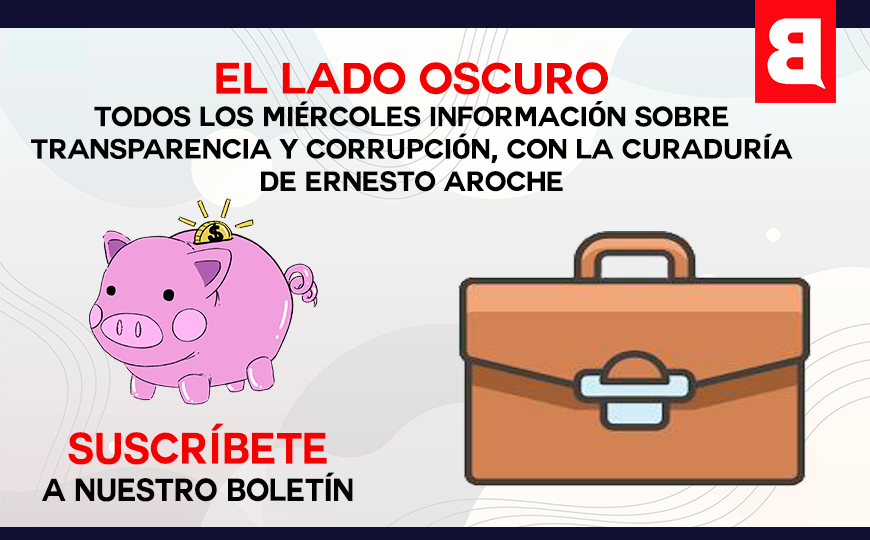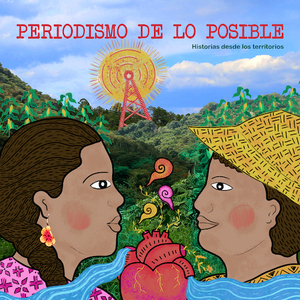
By Kau Sirenio, originally published February 4, 2021 | Translated by: Dawn Marie Paley.
SAN LUIS ACATLÁN, GUERRERO–During the Covid-19 pandemic in the Mountain region of Guerrero, classes look a little different: children sit around a table, listening attentively to their teacher, who tells them about a medicinal plant in their native language, Tu’un Savi, as a breeze refreshes the morning and birds sing. After each session, Arnulfo Rómulo Evangelista hands material to his students and explains the homework that they have to hand in the following Monday.
“Ka’yu ndo sà náni itun tatan xi’in itun ndù va’a xàxi yo, ndisa kù ña xà ndo ni oko kivi tyan in nu itun ka’an yu xi’in do (Write the name of medicinal trees and fruits, there should be 20 in total),” says the bilingual teacher in his native language.
The children help each other with the task. “Itun laxa xi’in itun tikuà ni itun tatan kù ru (the guava tree and the orange tree are medicinal),” one little girl tells her classmate.
Without letting his attention stray from his students, Arnulfo told Pie de Página about his work in Cuanacaxtitlán, in the municipality of San Luis Acatlán, Guerrero. He said the children cannot work from home because they have problems learning to read, but also because the community doesn’t have access to the internet.
“Even if we had access to the internet in the village, that wouldn’t guarantee that the children could have proper classes, because many have to do other work in the home. The father may be rushing to ensure the corn harvest succeeds, while the mother is preparing food for the workers who are laboring in the fields,” he said.
“I don’t know how this class will turn out, there have been many problems since I took over this group. There are kids in fourth grade who don’t know how to read or write, they are very behind. In addition, their parents do not pay attention to them. For example, of the 13 students I have, only eight of them arrived today. Four of them are involved in sustaining domestic tasks, and one went to work as a day laborer in Michoacán. For their parents, the pandemic has worked out well in that it allows them to take their kids to work with them.”
–Arnufo Rómulo Evangelista, teacher in the Guerrero Mountains
Arnulfo said he grades the children according to their intellectual abilities: high, medium and low. But he was recently surprised to learn he had a student who couldn’t read or write. “That boy, who can’t read or write, I give him special attention, so that he can reach the goals set out in his study plans and programs.”
Regardless of the fact that Cuanacaxtitlán has three pre-schools, four primary schools, a technical secondary school and a community college, there is no internet or space for kids and teenagers to study. Nor are there computers, tablets, or cellular phones with the capacity for online learning. Regardless, some of the students pay for phone credits of between 10 and 100 pesos (50¢ and $5 in US dollars) so that they can access the homework they are assigned at school.

Photo: Kau Sirenio | Pie de Página
Arnulfo said he decided to work with the students every Monday, because the lack of internet and supplies prevents them from studying as they should.
“Just imagine, if with in-person classes they were already so behind! What would happen to them if I left them to learn alone at home? The parents don’t care if their kids complete study plans and programs, what matters to them is making a living, most of them sell goods or farm, they are more interested in their sales than they are in education. If we can’t attend to the children’s needs, then we’re talking about a failure of education.”
The chit chat among the children in fifth grade at the bilingual primary school mixes with the song of the roosters and the melodies of other birds who move about in the branches of the almond tree that provides shade and protects the students from the sun. The birds don’t disturb the students, who glance up every now and then to admire them.
You might also want to read: A false sense of security in Chiapas: How COVID cases are being kept from the public eye, and why it matters
After working at a Teacher Training Center for eight years, Arnulfo returned to his community to become a classroom teacher. “I asked to come back as a teacher, because teaching children is not a bureaucratic affair; we can come up with all kinds of didactic material for the teachers, but it doesn’t make a difference if the teachers we train don’t return to the schools to teach,” he said.
After class, Arnulfo’s wife brought cake to share with the students on Three Kings Day. Everyone ate the cake, drank soda, and went home happy. Later, one of the students had to bring food to the workers helping his family, and the girls help their mothers in the kitchen.
Who is going to help my grandson, who doesn’t go to class?
“Here the teacher only comes to drop off homework and leaves. He left a phone number to get in touch with him, but he doesn’t answer when I call to ask for help with math, I don’t know how to read and I don’t understand numbers,” confided one mother in Jicayán de Tovar, a town on the border between Guerrero and Oaxaca.
Kids play in María Palacio’s yard. She is a mother who has worked to help her kids through school. “The oldest is in fifth grade and the youngest in third. I don’t understand much about math or history, it’s very complicated, but I make an effort to make sure they can both learn.”
Jicayán de Tovar has been without teachers since March, when the pandemic started. María said at first the teachers stopped working for a week, and then they came back to announce that classes would restart in April. “They came back in June when the parents got together to ask that they return because our kids were left without classes.”
Even though Mexico is in its worst ever health crisis due to the Covid-19 pandemic, health services have been suspended since March in this remote community in Guerrero’s Mountain region. “They closed the health center, there is no medicine. The doctor in charge here sees patients in his home and he sells medicine there,” María Palacio complained.

Photo: Kau Sirenio | Pie de Página
The mother of the family goes to the kitchen and comes back with tortillas, which she places on a platter, then she sets down a plate of cheese and salsa prepared with a mortar and pestle. She turns to the comal without pausing. “Since June [the teachers have] been coming every two weeks to leave study packages, they asked us to help the children, but we don’t understand, so we can’t help them work through their classes, it’s not our role to replace the teachers,” she said.
To get to Jicayán de Tovar, you have to drive up through the mountains that protect it. There, between pine trees and oak trees, you can start to glimpse the community. After winding through the hills, you’ll find the river that flows down from the heart of the mountains in Guerrero and Oaxaca.
Here, everyone speaks their native language of Tu’un Savi. Most of the youth have gone to work in agriculture in the United States, which is how the townspeople have built houses out of concrete blocks.
The Indigenous preschool is beside the community’s church. I visited Jicayán during the week, but there were no students there. “Here there are no cases of Covid, that’s why we asked the teachers to return, but they didn’t. Now the problem is even worse, because the preschool, primary and secondary students have all been left without classes,” said María.
“They come and leave homework for my grandson, but they charge him for the copies, from 20 to 50 pesos ($1 to $2.50 US dollars). That’s why we went to City Hall in Tlacoachistlahuaca to ask that they send us teachers to give classes, but they ignored us. The mayor said that they can’t, because of the pandemic. So who is going to help my grandson, who is out of school? We don’t have the internet either,” said Demetrio Palacio.
The elder explained that the teachers asked parents in Jicayán to share their cellphones with their kids so they can take classes online, but there’s no internet. “There is no internet, how are we going to connect when we don’t even have electricity in the rainy season. We know there is sickness, but what we don’t understand is how the President of the Republic can fail to see the needs we have here in the mountain.”
Jicayán de Tovar borders on the ejido of Jicaral, Oaxaca, and residents have been involved in an agrarian conflict for over a decade. It is part of Tlacoachistlahuaca, one of the poorest municipalities in Guerrero.
*Headline photo: Kau Sirenio
Kau Sirenio
Kau Sirenio is a Ñuu Savi journalist originally from the Costa Chica region of Guerrero. He was a reporter with the newspaper El Sur de Acapulco and La Jornada Guerrero, host of the bilingual program Tatyi Savi (voice of the rain) on Guerrero Radio and TV and the Autonomous University of Guerrero Radio XEUAG in the Tu’un Savi language. He is currently a reporter with the weekly Trinchera.
PERIODISMO DE LO POSIBLE
CANIJO CONEJO




